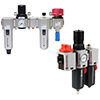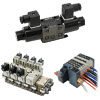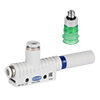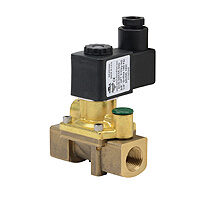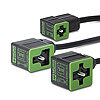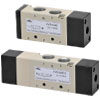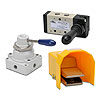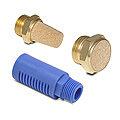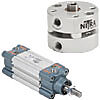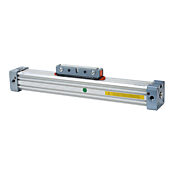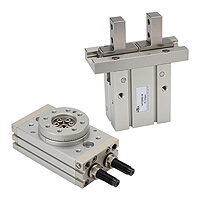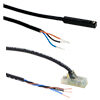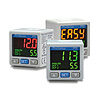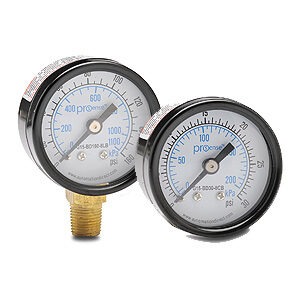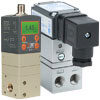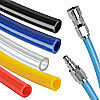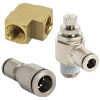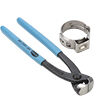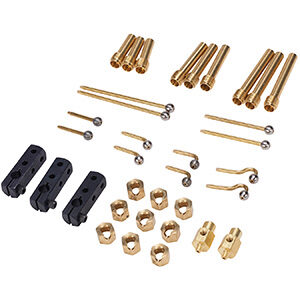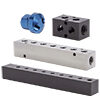 Cookies are not enabled on your browser.
Cookies are not enabled on your browser.Cookies are required for our site. Please enable cookies in your browser preferences to continue.
- Barcode / RFID / Vision
- Bulk Wire & Cable
- Cables (Terminated)
- Circuit Protection / Fuses / Disconnects
- Communications
- Drives & Soft Starters
- Enclosure Thermal Management & Lights
- Enclosures & Racks
- Field I/O
- HMI (Human Machine Interface)
- Hydraulic Components
- Motion Control
- Motor Controls
- Motors
- Pneumatic Components
- Power Products (Electrical)
- Power Transmission (Mechanical)
- Process Control & Measurement
- Programmable Controllers
- Pushbuttons / Switches / Indicators
- Relays / Timers
- Safety
- Sensors / Encoders
- Stacklights
- Structural Frames / Rails
- Tools & Test Equipment
- Valves
- Water (Potable) Components
- Wire & Cable Management
- Wire & Cable Termination
- Retired Products
Configuration Utilities
- PLC Family Selector
- P1000 PLC Systems
- P2000 PLC Systems
- P3000 PLC Systems
- ProductivityCODESYS
- CLICK PLC Systems
- Do-more® BRX PLC Systems
- LS-Electric® XGB PLC Systems
- Productivity®Open Systems
- Datalogic® Safety Light Curtains
- LS-Electric® Servo Systems
- Nitra® Pneumatic Grippers
- Object Detection (Sensors)
- PAL Controller Configurator
- Precision Gearbox Selector
- Protos X® Field I/O
- Pyrometers Selector
- Quadritalia® Modular Enclosures
- Stellar® Soft Starters
- Stepper System Selector
- SureFrame T-slot Extrusion
- SureMotion® XYZ Gantry
- SureServo2® System Selector
- SureStep® Linear Actuators
- Timing Belts & Pulleys
- Werma® Stacklights
- ZIPLinks
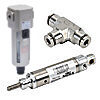
Pneumatic systems, powered by compressed air, use manual, air-pilot, or solenoid valve actuators for control, and offer a lower cost, more flexible, or safer alternative to electric actuators for industrial and commercial applications.

This page will refresh momentarily.
Warning
Some of the selected facets have been selected by the {{ assistanceData.title }} Help.
Resetting/clearing ALL facets will end {{ assistanceData.title }} Help.
![Help icon]() Selection Assistance - {{ assistanceData.title }}
Selection Assistance - {{ assistanceData.title }}
Stride Interactive Product Tour Request
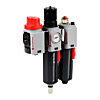
Pneumatic Air Preparation (FRL-Filters, Regulators, Lubricators)
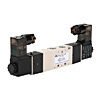
Directional Control Solenoid Valves
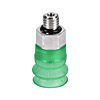
Vacuum Products
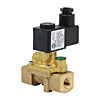
Solenoid Process Valves
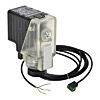
Solenoid Valve Cables & Connectors (Square DIN Style)
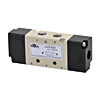
Air Pilot Valves
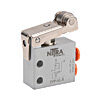
Manual Air Valves
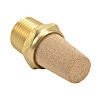
Exhaust Silencers
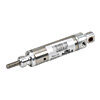
Pneumatic Air Cylinders
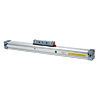
Rodless Air Cylinders
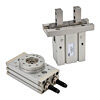
Pneumatic Rotary Actuators & Grippers
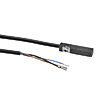
Pneumatic Cylinder Position Switches
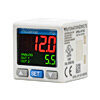
Pneumatic Pressure Sensors
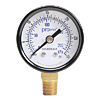
Pneumatic Pressure Gauges
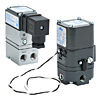
Pneumatic Transducers
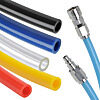
Flexible Pneumatic Tubing & Hoses
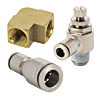
Fittings
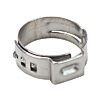
Hose Clamps
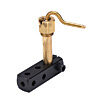
Air Jets
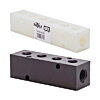
Manifolds
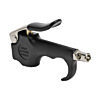
Pneumatic Blow Guns
Pneumatic Components
Often regarded as the fourth utility after electricity, natural gas and water, compressed air is widely used in manufacturing facilities. Basic pneumatic components such as valves, cylinders, hoses, and fittings can be combined in many ways to provide simple and reliable machine control. Pneumatic power transmission is often the best way to grip, lift, press, shift, or stack products. With the addition of some passive or adaptive control - as simple as a regulator in many cases - applications such as tensioning, crimping, cutting, and labeling are feasible and practical.
Pneumatic Air Preparation (FRL- Filters, Regulators, Lubricators)
A wide variety of air preparation components are available to meet a broad range of air supply filtration, regulation, and lubrication applications. The modular designs allow stand-alone applications and also enable easy field assembly for combining air prep components into a system (using modular assembly brackets, purchased separately). Pre-configured combination units are also available.
- Pneumatic filters
- Pressure regulators
- Air lubricators
- Air relief valves
- Soft start valves
- Combination filter/regulators
- Combination filter, regulator, shutoff, pressure gauge and lubricator units
- Air prep pressure switches
Directional Control Solenoid Valves
Directional control pneumatic solenoid valves are electrically operated to direct airflow to control operations in pneumatic systems. These valves are used to control cylinders, rotary actuators, and other pneumatic devices.
- Basic solenoid valves are standalone units that can be stacked or mounted to a manifold
- Miniature solenoid valves are for use where a small form factor is required
- Compact modular valve systems support up to 16 pneumatic solenoid valves per valve bank
- ISO 5599 valves conform to the ISO 5599/1 standard and fit onto several types of standalone manifolds
- The Pneumatic Automation Link (PAL) electro-pneumatic system can contain both electrical I/O as well as a solenoid valve bank. A single assembly can combine solenoid valves of various types, digital or analog I/O, and common power sources for all control components.
- Single valve or multiple manifold mounted valve applications
- A wide variety of manifolds, control interfaces, and accessories are available
Vacuum Products
Vacuum products offer an innovative way to safely pick up and move a load in applications such as pick and place.
- Vacuum suction cups in flat and bellowed styles for flexibility
- Flat cups made of Elastodur; bellowed cups are available in Elastodur, silicone or nitrile rubber
- Ejectors offer a variety of port connection sizes and styles as well as suction rates to fit specific applications
- Spring plungers for vacuum cup mounting aid in moving products of variable sizes
- Couplers to connect operators to air system
- End-of-arm tooling components to create an end-of-arm connection to a robot arm
Solenoid Process (Pipeline) Valves
Solenoid process valves work by energizing an electrical coil that causes a valve body to move from one position to another to allow or halt the flow of fluid. Process valves are available with glass filled nylon or brass bodies, Viton seals, and brass or stainless operators.
- 2 and 3-way poppet style valves
- 2-way diaphragm style valves
- 1/8" to 1" FNPT ports
- Selection of solenoid coil voltages available
- Media separated version ensures the working components (metal) of the valve do not come into contact with the working fluid.
Solenoid Valve Cables and Connectors (Square DIN Style)
High quality, square DIN style connectors and over-molded solenoid cables dramatically reduce wiring time.
- 8mm, 9.4mm, 10mm, 11mm and 18mm DIN 43650 sizes
- 24 VAC/VDC, 110 VAC/VDC and 230 VAC/VDC
- PVC jacketed cables in 1, 3 or 5 meter lengths
- Field wireable valve connectors on select models
- Field Installable or in-cable solenoid valve surge suppressors
- Miniature pin plug cables
Air Pilot Valves
Directional control air valves are body ported 3-port (3-way) or 5-port (4-way) spool valves used where air pressure control is preferred over electrical control. These valves are preferred over solenoid valves in applications where flammable materials exist (no risk of electrical sparks), where more torque is required, and where reliable operation in high temperature environments is needed.
- 1/8" to 1/2" NPT ports
- 2-position and 3-position models
- Single valve or multiple manifold mounted valve applications
Manual Air Valves
Manually operated air valves are ideal for non-electrical operator controlled applications.
- Pneumatic manual pushbutton , selector switch, and keyswitch operators, and compatible valves
- Mechanically operated valves with a wide selection of operators
- Miniature manual valves
- General purpose foot , handle, and push-pull operated valves
Exhaust Silencers
Add exhaust silencers (pneumatic mufflers) to the exhaust ports of directional control solenoid valves to reduce noise.
- Inch (NPT) and metric (BSPT) sizes
- Cone and flat style bronze exhaust silencers
- Cylindrical plastic silencers
Pneumatic Air Cylinders
Newest Additions!
- Metal Work ISO 6432 air cylinders
- Metal Work heavy-duty dual guide rod air cylinders
Pneumatic cylinders use compressed air acting on a piston with rod inside a cylinder to move a load along a linear path. Both single acting (single air port for actuation with spring return) and double acting (dual air ports for both actuation and return) cylinders are available with various stroke lengths and bore sizes.
- Imperial non-repairable
- ISO 6432 non-repairable
- Compact
- NFPA tie rod
- Dual guide rod
- All stainless steel non-repairable
- ISO 15552
- Compact extruded
Rodless Air Cylinders
Rodless cylinders perform the same function as rodded cylinders but instead of pushing/pulling a load with a rod attached to a piston, the load is carried alongside the piston and does not require the space needed to extend/retract a rod.
- Double-acting
- Stroke lengths up to 1000mm
Rotary Actuators & Grippers
Pneumatic rotary actuators and grippers are used to accurately clamp and position parts or tooling.
Rotary actuators are available in four body sizes, with or without shock absorbers.
- Double acting
- Adjustable travel range from zero to 190 degrees
- Anodized aluminum bodies include integral mounting slots for position switches
Grippers are available in both parallel and angular travels in seven different body sizes.
- Double acting, single acting normally closed, or single acting normally open
- Anodized aluminum bodies include integral mounting slots for position switches
Pneumatic Cylinder Position Switches
Pneumatic cylinder position switches offer a cost-effective interface between pneumatic actuators and electrical control systems. Superior to reed switches, these reliable solid-state switches have no moving parts for longer life and are designed for use with cylinders with magnetic pistons.
Pneumatic Pressure Sensors
Pressure switches and sensors are designed to monitor relative system pressure in many applications such as hydraulics and pneumatics. A range of products are available:
- Pneumatic pressure switches/ pressure sensors
- Mechanical pressure switches
- Pneumatic pressure transmitters
- Pneumatic digital pressure switches / transmitters
- Accessories including siphons, snubbers, and isolation needle valves
Pneumatic Pressure Gauges
General purpose pressure gauges are simple display devices for industrial and commercial applications. Mechanical dial pressure gauges use Bourdon tube sensing elements (no external power required). Digital pressure gauges offer enhanced functionality.
- Mechanical dial pressure gauges (1.5, 2.0, 2.5 inch dials)
- Air prep pressure gauges (40, 50, 63 mm diameter dials and 40 x 40 mm square)
- Pneumatic digital pressure gauges
Pneumatic Transducers
Electro-pneumatic transducers (I/P or E/P) are regulators that control air pressure based on an analog input signal. These transducers convert a 4-20 mA current signal (I) or a 0-5/0-10 V voltage signal (E) from a PLC or other controller to a linear pneumatic output pressure (P).
- Current and voltage inputs compatible with PLCs and other controllers
- Several output pressure ranges applicable for industrial pneumatic and process control applications
- Rated for NEMA 4X (IP65) environments
- Regtronic models accept current, voltage, and RS232 serial inputs, and feature an integral digital display that eliminates the need for external pressure gauges
- Select models approved for hazardous locations
Flexible Pneumatic Tubing & Hoses
Tubing and hose are a convenient way to connect pneumatic control components. All-purpose tubing options accommodate a variety of application needs. Hose generally refers to tubing with connectors pre-attached.
- Straight flexible tubing in polyurethane, nylon and PTFE
- Coiled flexible tubing
- Pneumatic air hoses
- Accessories for flexible tubing and hoses
Fittings
Newest Additions!
- CITO check valve special purpose fittings
Pneumatic fittings provide proper termination between a hose, pipe, device, or tubing. They are available in many standard sizes and styles to fit your application.
- Push-to-connect fittings
- Threaded fittings
- Quick-disconnect air couplings
- Swivel connectors
- Special purpose fittings
- Fitting accessories
Hose Clamps
Hose clamps are used to attach hose securely to barbed fittings and other devices.
- Plated steel adjustable style in 8 different sizes
- Stainless steel interlocking in 8 different sizes
- Hose clamp crimping tools
Air Jets
Brass pneumatic air jets are useful for numerous applications including cooling, chip removal, moving small parts, etc.
- Variety of air jet configurations
- Several nozzle styles with a selection convenient mounting bases for tremendous application flexibility
- Can mount to manifolds for multiple use applications
Pneumatic Manifolds
Newest Additions!
- CITO colored anodized aluminum manifolds
Manifolds provide a convenient junction point for the distribution of fluids or gases. Simply thread fittings into the ports to produce an organized method of supplying multiple lines from a single source. Manifolds are available with up to 10 stations, unless otherwise noted.
- Aluminum manifolds with up to 10 stations in a rectangular form factor, with operating pressures up to 1000psi; round models with up to 3 stations
- Nylon rectangular manifolds with operating pressure of 200psi
- Polypropylene rectangular manifolds with operating pressure of 150psi
- Stainless steel rectangular manifolds with operating pressure of 3500psi
- Anodized aluminum rectangular manifolds in red or blue colors, with up to 8 stations and psi ratings up to 3000psi; support multiple types of media
Pneumatic Blow Guns
Pneumatic blow guns (or air gun nozzles) are available in heavy duty palm type with safety tip or in aluminum and plastic pistol grip versions.
- Maximum input pressure 120 psi
- Connection: ¼ female NPT thread size on inlet
Check out our job openings
Free Online PLC Training
FREE Video Tutorials
FREE e-Newsletter
Automation Notebook
Product Literature
White Papers
News, Product and Training Bulletins
E-Books
 Safe &
Secure
Safe &
Secure

We accept VISA, MasterCard, Discover, American Express, PayPal or company purchase orders.
Voted #1 mid-sized employer in Atlanta
Check out our
job openings

